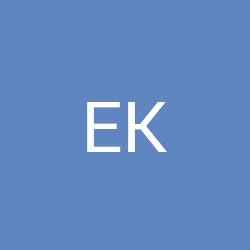Created At
Nov 08, 2022
Created By SmartHomeEddy
Monitor radiation levels from stations around the world and show 5 nearest stations, station highest curre...
Created At
Nov 08, 2022
Last Update
Feb 06, 2024
Platforms
HC 3 Lite, Z-box Hub, Yubii Home Pro, Yubii Home, Venture WISE, HC 3
Views
1405
Download
174
The Radiation Monitor collects radiation levels from all available stations around the world and shows 5 nearest stations to your location and one station with highest current readings and one station with the highest 24 hour average readings. The QuickApp uses the location (latitude and ongitude) of your Homecenter to measure the distance to the stations and to get the nearest stations. The bearings in degrees from your location to the stations is shown. Next to the measurements, the five nearest reactors are shown. The languages English, French, Polish and Duth are supported.
The main device shows the nearest measurement μSv/h. There are Child Devices for:
The nearest five reactors are retrieved once at startup of the QuickApp or at the next interval if you click on the button.
Radioactive@Home is a Polish science project using the distributed computing capabilities of the BOINC platform. The main goal of the project is to create a free and continuously updated map of radiation levels available for everyone, by gathering information about gamma radiation using sensors connected to the computers of volunteers willing to participate in the project. Project is completely non-commercial, participating will be free of charge (excluding cost of detector) and the software will be licensed under the GNU General Public License (GPL).
μSv/h: The sievert (symbol: Sv) is a unit in the International System of Units (SI) intended to represent the stochastic health risk of ionizing radiation.
In land navigation, a 'bearing' is ordinarily calculated in a clockwise direction starting from a reference direction of 0° and increasing to 359.9 degrees. Measured in this way, a bearing is referred to as an azimuth by the US Army but not by armies in other English speaking nations, which use the term bearing.
The human population is continuously exposed to ionizing radiation from several natural sources (cosmic and terrestrial contributions). For most individuals, exposure to natural sources exceeds that from all man-made (artificial) sources combined. The man-made sources arise from peaceful (e.g. medical use, energy generation, and associated fuel cycle facilities, radioisotope production, waste management) and military purposes (nuclear tests and their fallout or radioactive release, nuclear explosions).
Radiation levels:
Green: Radiation up to 0.3 μSv/h
Yellow: Radiation between 0.3 and 0.8 μSv/h
Red: Radiation above 0.8 μSv/h
1.14 µSv/h - Shelter population
5.7 µSv/h - Evacuation of population
11.4 µSv/h - Issue Iodine tablets
0.114 µSv/h - Max daily dose == 1 mSv/year
Reverse Geocoding by Nominatim
Reverse geocoding generates an address from a latitude and longitude. The reverse geocoding API does not exactly compute the address for the coordinate it receives. It works by finding the closest suitable OSM object and returning its address information. This may occasionally lead to unexpected results.
Links:
Variables (mandatory and created automatically):
Version 1.4 (6th February 2024)
- Added extra check for an empty response in the address from Geocity (thanks to @Sankotronic from the Fibaro forum)
How to install:

Added a new version with an extra check for the right response from Geocity (in case of response {"error":"Unable to geocode"})

Hi Tibor, probably some missing data from sensors in your neighborhood. But to know for sure and why I need some more information. Can you send me some more logging on the Fibaro forum PM?

Hi Doesn't work > [08.07.2023] [13:43:00] [DEBUG] [QUICKAPP29]: onInit [08.07.2023] [13:43:01] [ERROR] [QUICKAPP29]: QuickApp crashed [08.07.2023] [13:43:01] [ERROR] [QUICKAPP29]: main.lua:13: attempt to concatenate a nil value [08.07.2023] [13:43:01] [DEBUG] [RADIATION MONITOR ID:43]: onInit() - Initialise the QuickApp [08.07.2023] [13:43:03] [ERROR] [QUICKAPP43]: QuickApp crashed [08.07.2023] [13:43:03] [ERROR] [QUICKAPP43]: main.lua:378: time result cannot be represented in this installation

A new version is available, version 1.1 (9th January 2023). Changes: Changed handling of negative values for dots and icons: if tonumber(num) >= 0 and tonumber(num) <= 0.3 then Added a better translation for French
Added extra check for an empty response in the address from Geocity (thanks to @Sankotronic from the Fibaro forum)